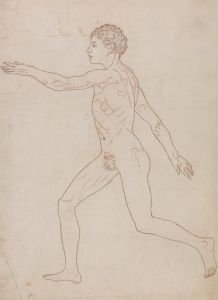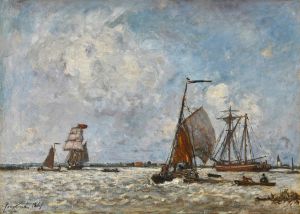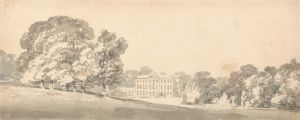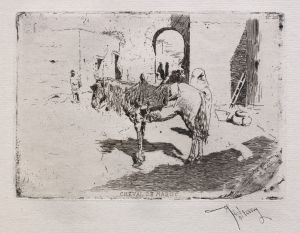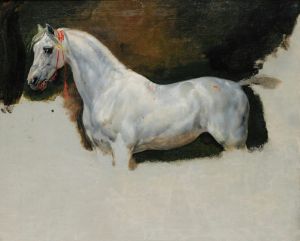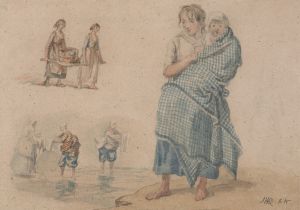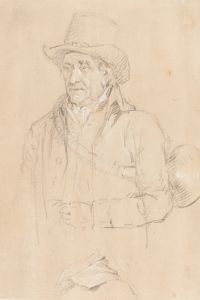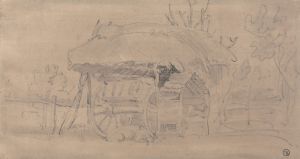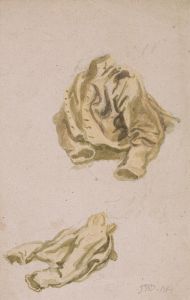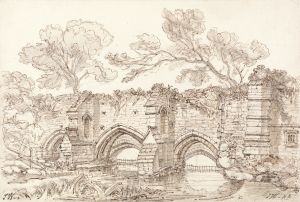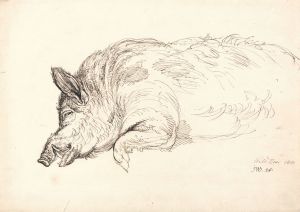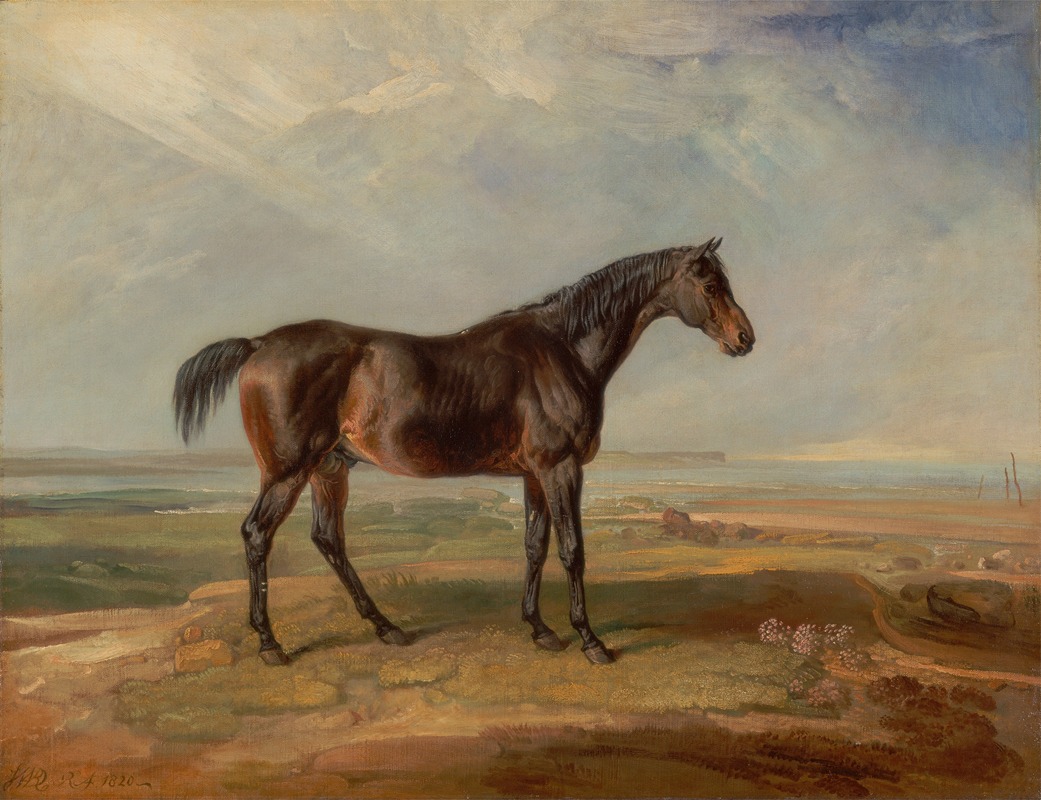
Dr. Syntax, a Bay Racehorse, Standing in a Coastal Landscape, an Estuary Beyond
A hand-painted replica of James Ward’s masterpiece Dr. Syntax, a Bay Racehorse, Standing in a Coastal Landscape, an Estuary Beyond, meticulously crafted by professional artists to capture the true essence of the original. Each piece is created with museum-quality canvas and rare mineral pigments, carefully painted by experienced artists with delicate brushstrokes and rich, layered colors to perfectly recreate the texture of the original artwork. Unlike machine-printed reproductions, this hand-painted version brings the painting to life, infused with the artist’s emotions and skill in every stroke. Whether for personal collection or home decoration, it instantly elevates the artistic atmosphere of any space.
"Dr. Syntax, a Bay Racehorse, Standing in a Coastal Landscape, an Estuary Beyond" is an oil painting by the British artist James Ward, renowned for his animal portraits and landscapes. Created in the early 19th century, this work exemplifies Ward's skill in capturing the majesty and vitality of equine subjects, a popular theme during this period in British art.
James Ward (1769–1859) was a prominent figure in the British art scene, particularly known for his detailed and dynamic depictions of animals. His works often reflected the Romantic movement's emphasis on nature and emotion. Ward's ability to portray animals with anatomical precision and emotional depth made him a sought-after artist among patrons who valued equestrian subjects.
The painting features Dr. Syntax, a celebrated bay racehorse of the time, standing in a serene coastal landscape. The composition is notable for its harmonious blend of the horse's powerful form with the tranquil backdrop of an estuary. The coastal setting adds a unique dimension to the painting, contrasting the horse's dynamic presence with the calmness of the natural environment.
Dr. Syntax was a well-known racehorse in the early 19th century, celebrated for his racing achievements. The horse's fame and success on the racetrack made him a popular subject for artists like Ward, who were commissioned to capture the likenesses of such esteemed animals. The choice of Dr. Syntax as the subject reflects the cultural significance of horse racing in Britain during this era, a sport that was both a popular pastime and a symbol of status and prestige.
Ward's painting technique is evident in the meticulous rendering of Dr. Syntax's musculature and the glossy sheen of his coat, demonstrating the artist's deep understanding of equine anatomy. The use of light and shadow enhances the three-dimensionality of the horse, making it appear almost lifelike. The background, with its soft, muted tones, serves to highlight the horse as the focal point of the composition.
The painting is also a testament to Ward's ability to convey the character and spirit of his subjects. Dr. Syntax is depicted with a sense of nobility and grace, qualities that were likely intended to reflect the horse's esteemed reputation. The coastal landscape, with its expansive sky and distant horizon, adds a sense of grandeur and timelessness to the scene.
"Dr. Syntax, a Bay Racehorse, Standing in a Coastal Landscape, an Estuary Beyond" is a fine example of James Ward's contribution to animal portraiture and the broader Romantic movement in art. The painting not only celebrates the beauty and strength of its equine subject but also captures a moment in British cultural history when horse racing was a prominent and celebrated aspect of society. Through this work, Ward has left a lasting legacy that continues to be appreciated by art enthusiasts and historians alike.






